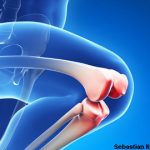
For patients with arthritis, knee replacement offers the opportunity to regain functional mobility, reduce pain and improve quality of life. Recent data presented at the annual meeting of the American Academy of Orthopedic Surgeons (AAOS) suggest that the benefits of knee replacement may also extend to the prevention and management of cardiovascular disease in patients with moderate-to-severe osteoarthritis (OA). For patients with rheumatoid arthritis (RA) with severely arthritic knees, another study showed that same-day bilateral knee replacement is safe in selected patients.
Cardiovascular Protection of Joint Replacement in Osteoarthritic Patients
Bheeshma Ravi, MD, PhD, a physician in the Division of Orthopaedic Surgery at the University of Toronto, Ontario, Canada, reported on outcomes of a study that showed a significant reduction in the risk of subsequent cardiovascular events in people who underwent total joint replacement therapy for moderate-to-severe OA of the knee or hip.
In the study, 2,200 adults with hip and knee OA age 55 or older at the time of study recruitment (between 1996 and 1998) were followed prospectively until 2011 or death. Investigators used a propensity landmark analysis to compare the rates of serious cardiac event or death (composite outcome) and survival between people who received primary total joint athroplasty (TJA) and those who did not during the exposure period of seven years following initial assessment.
Based on a comparison of a propensity-score matched cohort of 162 matched pairs of patients with moderate-to-severe arthritis, the study found that the matched patients who underwent a TJA during the exposure period were 40% less likely to experience a serious cardiovascular event (e.g., heart attack, stroke or emergent coronary revascularization) or death compared with those who did not undergo TJA (Hazard Ratio [HR] of 0.63 [95% CI, 0.49–0.82]; P=0.0005).
Within seven years of exposure, the absolute risk reduction (of serious cardiac event or death) was 13.6% (95% CI, 3.3–23.9) and the number needed to treat was 8 (95% CI, 4–30).
According to Dr. Ravi, the cardioprotective benefit of a primary TJA is most likely due to the increased capacity for physical activity in the patients who underwent TJA. “It’s important that clinicians advise patients to use the opportunity for pain-free motion and improved function that come with arthroplasty,” he says.
However, he reiterates the need to also talk to patients about the real risks for postoperative complications after undergoing a TJA, including postoperative myocardial infarction, infection and the need for early revision.

